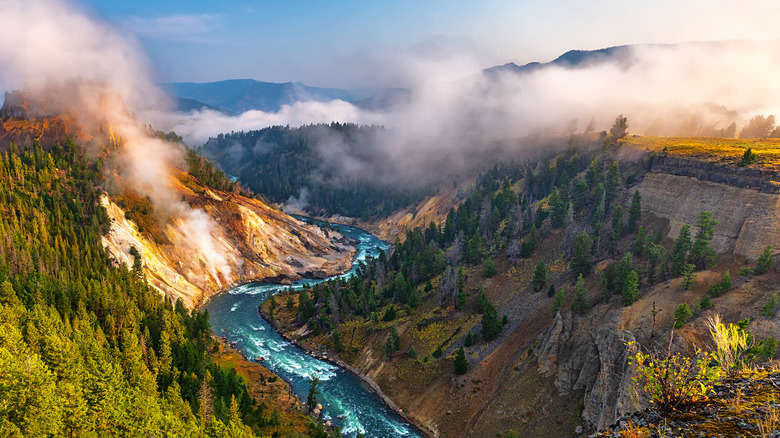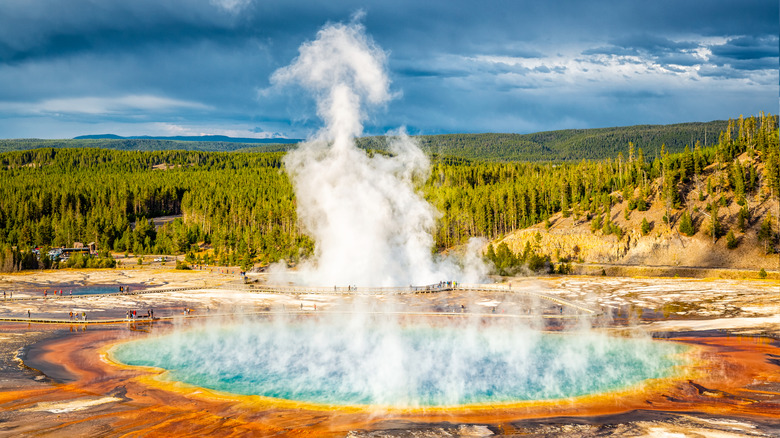Wyoming Has A Terrifying Secret Below Yellowstone
Since 1872, Yellowstone National Park has been protected land with beautiful natural wonders which now attract millions of visitors. However, the park has a huge, terrifying secret: It's an active supervolcano and one of the largest volcanic systems in the world.
Yellowstone sits above a spot in the Earth's mantle where columns of hot, molten rock called plumes rise to form volcanoes in the planet's crust. This spot is called a hotspot, and it creates a type of volcano not associated with a plate boundary. Yellowstone has produced three caldera types of volcanic explosions: The first happened 2.1 million years ago at Huckleberry Ridge, the second was 1.3 million years ago at Mesa Falls, and the third was 631,000 years ago at Lava Creek. Together, these eruptions and other geological events — such as collapsing ground, thick lava flows, erosive ice and water flows, and faulting — have shaped the Yellowstone Plateau that we know and love today.
Perhaps the most frightening aspect, though, is that these explosions were so massive that the results don't even compare to those that came from volcanoes that have erupted in the last 100 years. The Mount Saint Helens eruption in 1980, for instance, spewed 2.5 cubic kilometers of material, which is the same as 1 million Olympic swimming pools, across a 600-square-kilometer area. By comparison, the results of the volcano eruption at Huckleberry Ridge involved 2,450 cubic kilometers of material spewed — 6,000 times more than Helens — across a 15,500-square-kilometer area.
The potential for a future volcanic eruption at Yellowstone
It's only natural to err on the side of caution after learning that Yellowstone National Park is just one big supervolcanic system. A research geologist with the U.S. Geological Survey and the deputy Scientist-in-Charge of the Yellowstone Volcano Observatory, Mark Stelten, addressed visitor concerns about when another eruption could happen in an update on the USGS website. Based on forecasting methods, real-time monitoring, and historical data, Stelton explained, "The annual probability of a volcanic eruption is on the order of 0.001% ... But one day, perhaps thousands or tens of thousands of years from now, the volcanic off-season in Yellowstone may end."
If and when it does happen, volcanologists will see it coming. "Typically, volcanoes give weeks to months of warning prior to their initial eruption. Volcanoes like Yellowstone typically take even longer," noted former Scientist-in-Charge of the YVO Jake Lowenstern. But if it did happen, a supervolcano eruption at Yellowstone would change the world's climate because of how much ash it would produce.
In the meantime, the most likely events to occur at Yellowstone are hydrothermal explosions and lava flows. Like the Yellowstone Biscuit Basin hydrothermal explosion in July 2024, hydrothermal explosions are usually small and only happen every few years. Lava flows are also pretty common, accounting for almost all of the volcano-related activity in the park and causing minimal damage outside of the area.

